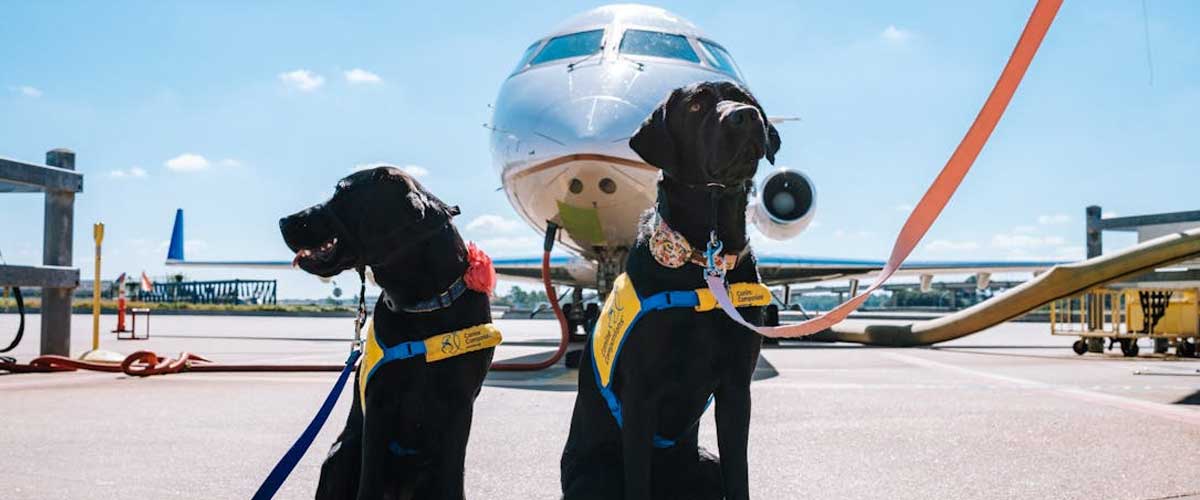In the ongoing battle against drug trafficking and abuse, law enforcement agencies around the world have turned to an unlikely ally: sniffer dogs, or detection dogs.
These highly trained canines possess an extraordinary ability to detect a wide range of illegal substances, making them invaluable in the fight against drug-related crime.
A Canine’s Extraordinary Sense of Smell
The primary advantage that sniffer dogs bring to drug detection is their exceptional sense of smell.
A dog’s olfactory system is approximately 10,000 to 100,000 times more sensitive than that of a human.
This incredible sensitivity allows them to detect even the smallest traces of drugs, which might be undetectable to human investigators.
Dogs can identify specific scents associated with various drugs, including marijuana, cocaine, heroin, and methamphetamines.
Training and Specialization
To prepare for their roles, sniffer dogs undergo rigorous training programs.
These can range from basic obedience to advanced scent discrimination.
During their training, dogs are taught to recognize the unique odors of specific drugs.
Positive reinforcement techniques, such as rewards and play, are used to encourage the dogs, ensuring that they are both motivated and reliable.
Different breeds are often employed for detection work, each bringing its unique strengths.
Labrador Retrievers and German Shepherds are among the most commonly used breeds, valued for their intelligence, agility, and keen sense of smell.
Applications in Law Enforcement
Sniffer dogs are employed in various contexts to help combat drug trafficking.
They can be seen working at airports, seaports, and border crossings, where they screen luggage, vehicles, and cargo for signs of illegal substances.
Their presence helps deter smuggling attempts and enhances the overall security of these critical points of entry.
In addition to customs operations, sniffer dogs are used in street-level policing, where they can assist officers in searching vehicles and properties suspected of containing drugs.
Their ability to work in diverse environments—from crowded public spaces to private homes—demonstrates their adaptability and efficacy.
Enhancing Community Safety
The impact of sniffer dogs extends beyond just finding drugs.
Their presence can significantly enhance community safety by contributing to the disruption of drug trafficking networks and reducing the availability of illegal substances in the streets.
When communities see law enforcement actively preventing drug-related crime, it creates a sense of security and trust between the police and the public.
Moreover, the use of sniffer dogs can also facilitate harm reduction strategies.
By identifying drug presence in public places, authorities can intervene and provide assistance to individuals at risk of substance abuse, helping them access resources for treatment and support.
Challenges and Considerations
While sniffer dogs are highly effective, their use is not without challenges.
The accuracy of a dog’s detection can be influenced by various factors, including the dog’s training, the environment, and even the handler’s cues.
There have been instances of false positives, leading to legal debates about the admissibility of dog alerts in courtrooms.
Additionally, ethical considerations arise regarding the privacy rights of individuals being searched.
Striking a balance between effective law enforcement and respecting civil liberties is essential.
Conclusion
In conclusion, sniffer dogs play a critical role in the detection and prevention of drug trafficking and abuse.
Their exceptional sense of smell, combined with extensive training, enables them to assist law enforcement effectively in their efforts to combat drug-related crime.
While challenges persist, the positive contributions of these canines to community safety and their ability to enhance enforcement strategies cannot be overstated.
As drug-related issues continue to evolve, the integration of sniffer dogs into law enforcement remains a vital tool in the pursuit of a safer society.









